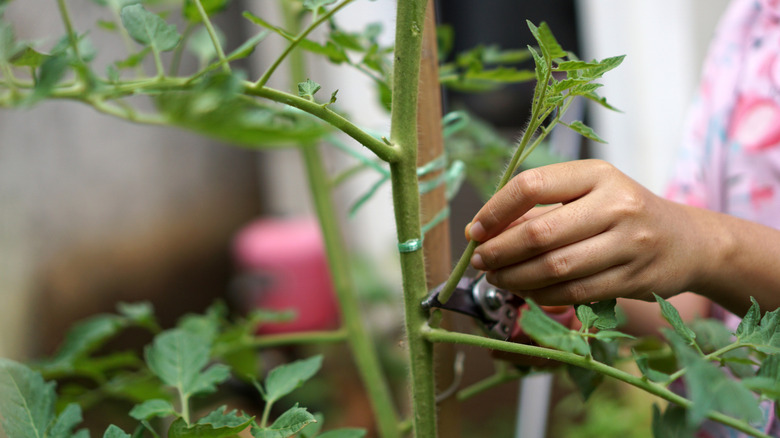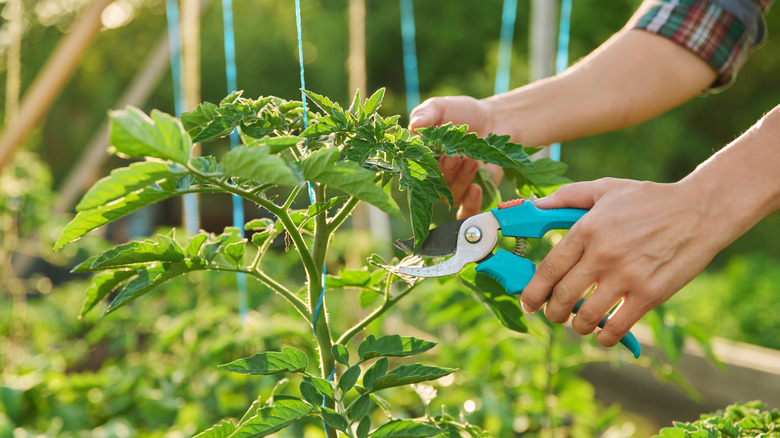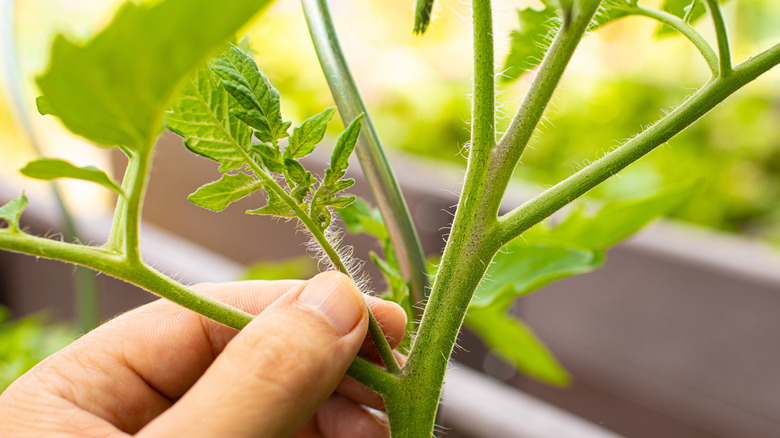Here's How Often You Should Be Pruning Your Tomato Plants For The Best Harvest
You've probably heard a lot about the benefits of pruning your tomato plants: bigger harvests, healthier vines, fewer diseases. But if you've tried it before and didn't see much difference, there's a good chance the problem wasn't in the pruning process itself, but when you did it. One of the biggest mistakes you can make when pruning tomato plants often comes down to timing. The core rule is that you should prune your tomato plants once every 10 to 14 days after the first pruning.
Pruning at the wrong time can actually slow your plant's growth and leave it stressed, while pruning at the right interval keeps it productive and strong. This spacing gives your plant the time to recover and redirect its energy into developing fruit rather than constantly healing from cuts. Prune too soon, and you risk stunting your plant's growth. Wait too long, and you'll end up with overcrowded foliage that blocks sunlight and airflow. Getting that timing right is the first step toward the best harvest your tomato patch has ever seen.
Finding your perfect tomato pruning rhythm
Once your tomato plants have had their first pruning, it's all about sticking to that steady 10 to 14-day rhythm. But the very first pruning shouldn't happen too early. You need to wait until you can clearly see flowers forming and starting to open. For most gardeners, that's late June or early July. From there, follow the same interval until about a week or two before your first ripe tomatoes. That final pause is important because it lets your plants grow a protective canopy of leaves to shield the fruit from sunscald.
The consistency of this schedule is what really pays off. It helps channel the plant's energy into ripening fruit rather than unnecessary foliage, speeds up the maturing process, and opens up airflow through the branches. Better airflow keeps leaves drier and makes the plant less susceptible to fungal diseases, while keeping lower foliage off the ground adds a layer of protection from common diseases and problems garden tomatoes can develop, such as anthracnose, early blight, and Septoria leaf spot.
Smart pruning habits for healthier tomatoes
The surest way to ruin a good pruning schedule is by getting too aggressive with the shears. Stripping off too much foliage at once weakens the plant and exposes the fruit to harsh summer sun. If you're not sure how to prune your tomatoes without harming them, a better practice is to remove leaves only from the bottom 25 cm (about 12 inches) so nothing touches the ground. For tall, indeterminate varieties, decide early on how many main stems (leaders) you want, then support them with stakes or a trellis.
Side shoots, the little stems sprouting where a leaf meets the main stem, can be pinched off while they're small, or neatly cut away with a sharp knife if they're larger. Bushy, determinate varieties don't need pinching at all. And remember, your hands and tools can spread disease as easily as pests or weather. Keep your pruners or scissors clean with rubbing alcohol between plants, and wash or sanitize your hands before working with each plant.


